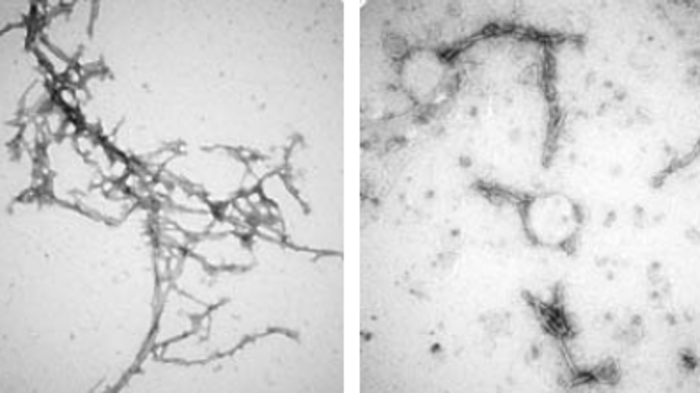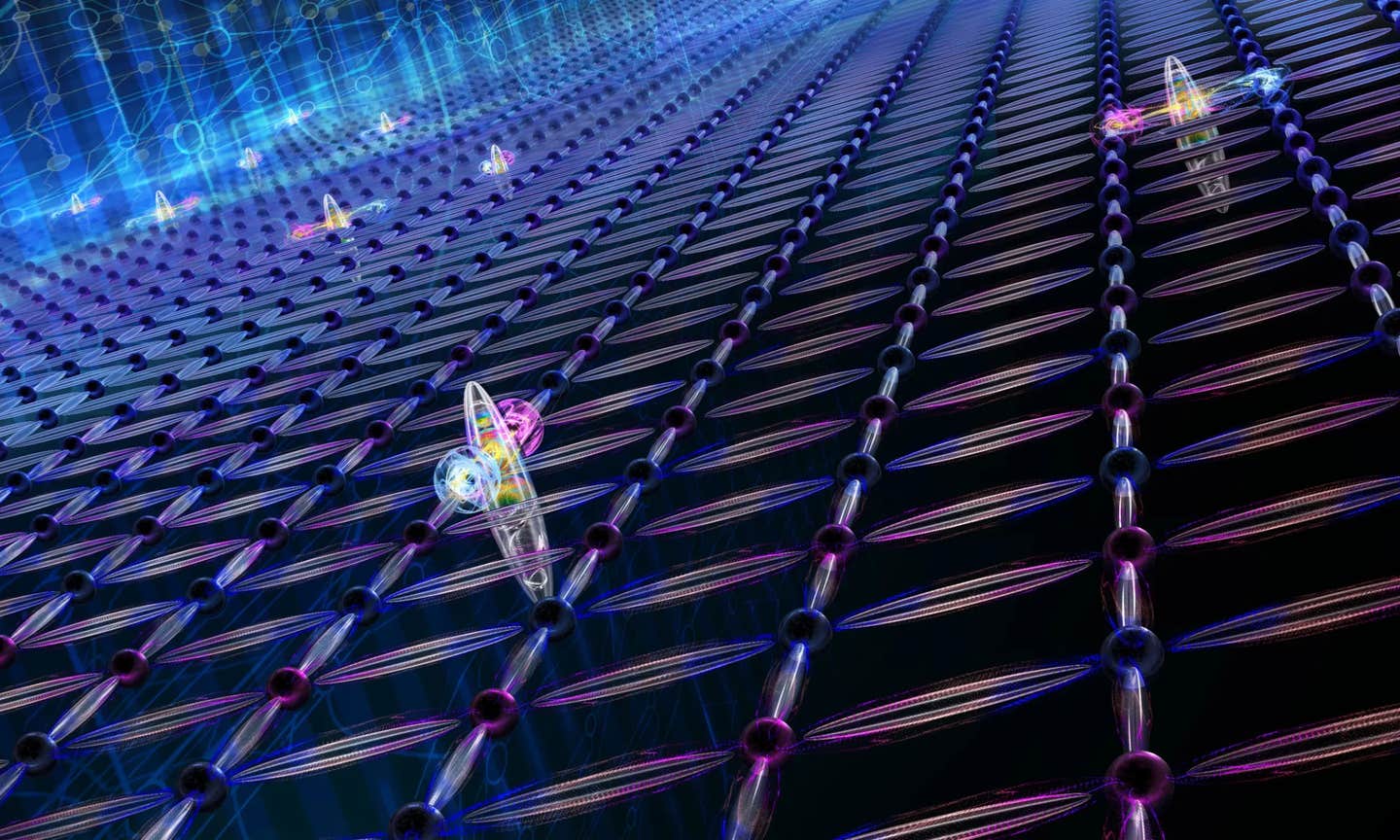Scientists create tough nanobodies to treat Dementia and Parkinson’s Disease
Researchers develop a nanobody capable of getting through the tough exterior of brain cells and untangling misshapen proteins leading to PD.

[July 30, 2022: Ayanna Tucker, Johns Hopkins Medicine]
The structure of alpha-synuclein clumps (on the left) was disrupted by the nanobody PFFNB2 (as shown on the right). (CREDIT: Xiaobo Mao)
Proteins called antibodies help the immune system find and attack foreign pathogens. Mini versions of antibodies, called nanobodies — natural compounds in the blood of animals such as llamas and sharks — are being studied to treat autoimmune diseases and cancer.
Now, Johns Hopkins Medicine researchers have helped develop a nanobody capable of getting through the tough exterior of brain cells and untangling misshapen proteins that lead to Parkinson’s disease, Lewy body dementia, and other neurocognitive disorders caused by the damaging protein.
The research, published in Nature Communications, was a collaboration between Johns Hopkins Medicine researchers, led by Xiaobo Mao, Ph.D., and scientists at the University of Michigan, Ann Arbor. Their aim was to find a new type of treatment that could specifically target the misshapen proteins, called alpha-synuclein, which tend to clump together and gum up the inner workings of brain cells. Emerging evidence has shown that the alpha-synuclein clumps can spread from the gut or nose to the brain, driving the disease progression.
In theory, antibodies have potential for zeroing in on clumping alpha-synuclein proteins but the pathogen-fighting compounds have a hard time getting through the outer covering of brain cells. To squeeze through tough brain cell coatings, the researchers decided to use nanobodies, the smaller version of antibodies.
Related Stories:
Traditionally, nanobodies generated outside of the cell may not perform the same function inside the cell. So, the researchers had to shore up the nanobodies to help them keep stable within a brain cell. To do this, they genetically engineered the nanobodies to rid them of chemical bonds that typically degrade inside a cell. Tests showed that without the bonds the nanobody remained stable and was still able to bind to misshapen alpha-synuclein.
The team made seven, similar types of nanobodies, known as PFFNBs, that could bind to alpha-synuclein clumps. Of the nanobodies they created, one — PFFNB2 — did the best job of glomming onto alpha-synuclein clumps and not single molecules, or monomer of alpha-synuclein. Monomer versions of alpha-synuclein are not harmful and may have important functions in brain cells.
The researchers also needed to determine if the PFFNB2 nanobody could remain stable and work inside brain cells. The team found that in live mouse-brain cells and tissue, PFFNB2 was stable and showed a strong affinity to alpha-synuclein clumps rather than single alpha-synuclein monomers.
Nanobodies infographic. (CREDIT: Ayanna Tucker, Joshua Glenn, Lauren Hines)
Additional tests in mice showed that the PFFNB2 nanobody cannot prevent alpha-synuclein from collecting into clumps, but it can disrupt and destabilize the structure of existing clumps.
“Strikingly, we induced PFFNB2 expression in the cortex, and it prevented alpha-synuclein clumps from spreading to the mouse brain’s cortex, the region responsible for cognition, movement, personality and other high-order processes,” says Ramhari Kumbhar, Ph.D., the co-first author, postdoctoral fellow at the Johns Hopkins University School of Medicine.
“The success of PFFNB2 in binding harmful alpha-synuclein clumps in increasingly complex environments indicates that the nanobody could be key to helping scientists study these diseases and eventually develop new treatments” says Mao, associate professor of neurology.
Other researchers involved in this study include Yuqing Liu, Ramhari Kumbhar, Kundlik Gadhave, and Ning Wang of the Johns Hopkins University School of Medicine; Yemima R Butler, Wenjing Wang, and Peiran Zhao of the University of Michigan, Ann Arbor; and Yanmei Li of Tsinghua University.
This work was supported by the University of Michigan, the National Institutes of Health (AG072009, NS107318, AG073291, AG071820, NS125592, AG056841, NS125559), the Parkinson’s Foundation, and the Maryland Stem Cell Research Foundation Discovery Award.
Note: Materials provided above by the Johns Hopkins Medicine. Content may be edited for style and length.
Like these kind of feel good stories? Get the Brighter Side of News' newsletter.
Joseph Shavit
Head Science News Writer | Communicating Innovation & Discovery
Based in Los Angeles, Joseph Shavit is an accomplished science journalist, head science news writer and co-founder at The Brighter Side of News, where he translates cutting-edge discoveries into compelling stories for a broad audience. With a strong background spanning science, business, product management, media leadership, and entrepreneurship, Joseph brings a unique perspective to science communication. His expertise allows him to uncover the intersection of technological advancements and market potential, shedding light on how groundbreaking research evolves into transformative products and industries.



